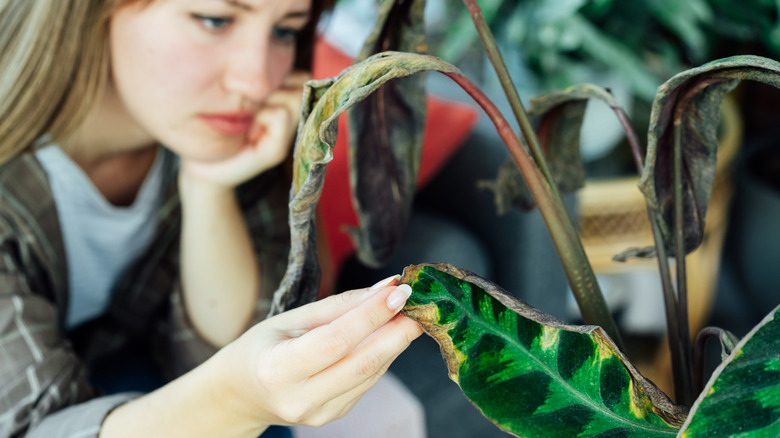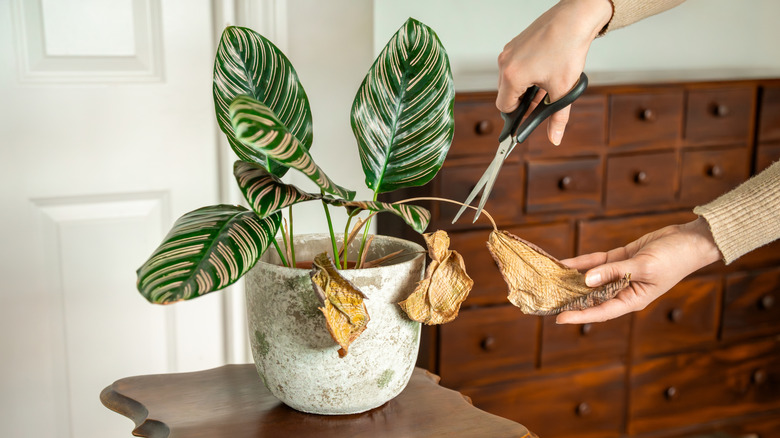Your Plants Get Sunburned, Too: Here's How To Save Them
We may receive a commission on purchases made from links.
Long summer days are perfect for lazing about in the sunshine, but the price of staying under those rays for too long means painfully red, tender skin that often comes with a severe dehydration headache. Try not to judge as we have all been there. But did you know that plants can suffer from sunburn, too? While they do not turn red and acquire a headache, extreme sun exposure can also be damaging. Saving a sunburned plant takes quick action, so get them out of the sun and give them some first aid.
Fortunately, it is easy to tell if your plants have a sunburn. The earliest sign of too much sun is a dramatic change in the color of the leaves. Typically, they will turn white or yellow. If the plant continues to be overexposed to the elements, the leaves could whither and turn brown. You will also notice the edges of the leaves becoming dried out or crispy.
While it seems obvious that outdoor plants are at risk of sunburn, indoor plants are just as vulnerable. Often this happens as the seasons change and the sunlight filters through the windows at a different angle. A plant that was in the perfect spot for bright but indirect light may now be in danger. Since indoor plants are easy to move, having two different plant layouts for the winter and summer may save your indoor garden. Remember, plants cannot talk, but sunburn is one of the crucial things your houseplants' changing leaves are trying to warn you about.
First aid for sunburned plants
The moment you notice signs of sunburn, get your plant out of the sun. If it is potted and can be relocated, find a cozy spot somewhere in the shade. For plants that are already in a garden bed, find a creative way to shade your plant from the brutally hot sun. This might mean investing in this Shade Cloth for Garden Plants and rigging up a structure to suspend it, or creating a temporary solution using garden stakes and fabric. The sooner you relieve the plants from the sun's direct contact, the sooner it can begin to heal.
Once you have taken this important step to save your plant, use a sharp clipper, such as these Vivosun Curved Gardening Scissors, to trim off the affected parts. Leaves that have sustained more than half-a-leaf's damage should be trimmed off. While the damaged leaves are still attached, the plant will use its resources on those leaves, even though the leaves are unable to produce energy for the plant. Avoid the temptation to overwater, as this can lead to a variety of other issues that can prolong recovery time.
As you continue to expand your indoor or outdoor garden, follow the planting instructions carefully to avoid sunburn. If you have a lot of open and sunny space, it can be tempting to fill the bed, but you want to make sure you're placing plants where they'll thrive. You could also consider planting these beautiful flowers that grow perfectly in the shade.

